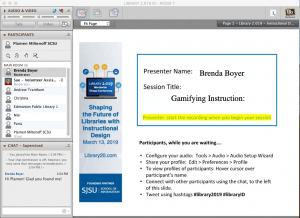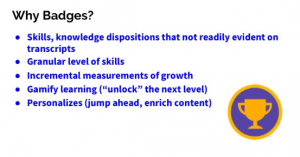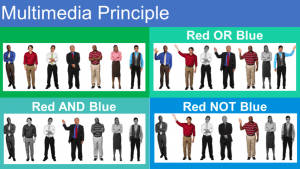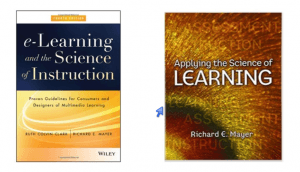Twelve Years Later: What’s Really Changed in the K-12 Sector? (Part 1)
https://www.edsurge.com/news/2019-04-03-twelve-years-later-what-s-really-changed-in-the-k-12-sector-part-1
In fall 2007, Larry Berger, CEO of Wireless Generation (now Amplify) was invited to submit a paper to an “Entrepreneurship in Education”
As education entrepreneurs know, growth in K-12 comes hard. Sometimes very hard. We were living Marc Andreessen’s startup mantra: “You only ever experience two emotions: euphoria and terror.”
The edtech boom of the past two decades promised efficacy and new instructional models. Many teachers instead experience it as “clutter.” But poorly integrated standards, curriculum, assessment, and intervention materials have always been a problem.
When it comes to instruction, the work consists of four segments: core curriculum, supplemental (intervention, test prep, little books) curriculum, assessment, and technology (hardware, infrastructure and connectivity). Each of these workstreams are run by separate teams, using independent funding streams, only rarely coordinating. Schools rely—as they always have—on the hero in the classroom, who has to somehow synthesize everything for a roomful of children, every single day.
Twelve Years Later: How the K-12 Industry and Investment Landscape Has Shifted (Part 2)
https://www.edsurge.com/news/2019-04-05-twelve-years-later-how-the-k-12-industry-and-investment-landscape-has-shifted-part-2
Twelve years ago, Amplify CEO Larry Berger and I wrote about the “pareto distribution” of companies in the K-12 sector.
The “oligopoly” was the natural outcome of a highly decentralized system and fragmented demand. To serve 15,000-plus districts and more than 100,000 school buildings, a company needed huge sales and service teams; to afford them, the company needed a bookbag full of products across content areas, grade ranges, and use cases. The structure of demand created the “Big Three”—McGraw-Hill, Houghton Mifflin Harcourt and Pearson.
Meanwhile, the number of small players—further right on the pareto distribution—has grown dramatically. Online distribution and freemium business models have enabled companies like Flocabulary, Newsela, Nearpod, and others
few alternative models to consider:
companies like Remind, ClassDojo, and Edmodo, who all adopted a “West Coast” approach: collect active users now, with plans to monetize later.
The second includes the “platform” players—Schoology, itslearning, Canvas, and other LMS-like platforms. They have set out to do something differently, only possible by means of technology—to be the search, storage and distribution platform for instructional content. Google Classroom has instead emerged as the de facto standard platform, fueled by the runaway adoption of Chromebooks.
The third includes “policy responsive” players—companies like Panorama, Ellevation or Wireless Generation. hese companies help school systems meet a new policy requirement—social-emotional learning, English Language Learning, and reading assessment, respectively.

But we’re not “decluttering” our classrooms or in our schools. What would it take for the private and public sectors to work shoulder-to-shoulder?
a catch-22: so long as buying is fragmented, it’s hard to justify the integrated product investment; so long as products are fragmented, it’s hard for a district to create an integrated instructional model.
Follow Along With a Grad Seminar About Edtech: Part 1, Picking the Best Tech
https://www.edsurge.com/news/2019-03-12-follow-along-with-a-grad-seminar-about-edtech-part-1-picking-the-best-tech
a tech catalog for students to explore and choose from, partially based on Georgetown’s enterprise suite, including a learning management system (Canvas), blogging (WordPress or other), student-run web domains, web annotation (Hypothesis) https://web.hypothes.is/, collaborative writing (Google Suite), discussion boards (Discourse), and videoconferencing (Zoom).
Neil Selwyn’s excellent Education and Technology: Key Issues and Debates.
++++++++++++++++++++++++++++
How Can Digital Audio Enhance Teaching and Learning?
https://www.edsurge.com/news/2019-03-28-grad-seminar-on-edtech-part-2-how-can-digital-audio-enhance-teaching-and-learning
Before there were podcasts, there was pirate radio, rogue broadcasters flinging unusual sounds over borders and adding new music to cultures. And before that there was the “theater of the mind,” harnessing radio’s deep power to inspire listeners’ imaginations.
Then we advanced to podcasting’s second wave—the one we’re enjoying now—the one sparked by Serial’s massive success in 2014. When you consider audiobooks in the mix, it’s clear how varied and mainstream portable digital audio is today.
+++++++++++++++++++
https://www.edsurge.com/news/2019-04-18-video-assignments-are-the-new-term-paper-how-does-that-change-teaching-and-learning
Digital video has taken the world by storm. Netflix is busy changing television and movies. YouTube may be humanity’s largest collaborative cultural project, aggregating an astonishing amount of user-generated content. The Google-owned service is widely used that it may already soak up more than a third of all mobile traffic.
Unsurprisingly, we increasingly learn from digital video. The realm of informal learning is well represented on YouTube—from DIY instruction to guerrilla recordings of public speakers. Traditional colleges now rely on digital video, too, as campuses have established official channels and faculty regularly turn to YouTube for content. And new kinds of educational institutions have emerged, like the nonprofit Khan Academy,
We also explored the rise of teaching via live video. More colleges are using it for online learning, since it can make students and instructors more present to each other than most other media. We also saw videoconferencing’s usefulness in connecting students and faculty when separated by travel, illness or scheduling challenges.
Our readings—Zac Woolfitt’s “The effective use of video in higher education,” and Michelle Kosalka’s “Using Synchronous Tools to Build Community in the Asynchronous Online Classroom”—and discussion identified a range of limitations to video’s utility. Videoconferencing requires robust internet connection that not all students have access to, and even downloading video clips can be challenging on some connections. People are not always comfortable appearing on camera. And some content is not well suited to video, such as mostly audio conversations or still images.
Library 2.019 virtual mini-conference, “Shaping the Future of Libraries with Instructional Design
Wednesday, March 13th, from 12:00 – 3:00 pm US Pacific Daylight Time (click https://www.timeanddate.com/worldclock/fixedtime.html?msg=Library+2.019+ID&iso=20190313T12&p1=283&ah=3 to see in your local time zone).
Here are the links to the recordings of the sessions:
https://www.library20.com/page/recordings-id (you must be logged in)
This is a free event, thanks to our founding conference sponsor: School of Information at San José State University.
ATTENDING: We will send links for attending the conference a day or two before the event.
If you have friends or colleagues that wish to attend, this is a free event and we encourage you to share our information widely. However, please send them to the conference registration page (https://www.library20.com/instructionaldesign) rather than giving them the above link directly as it will allow us to track participation.
https://www.library20.com/instructionaldesign
https://www.library20.com/forum/categories/library-2-019-instructional-design-accepted-submissions/listForCategory
#library2019 #libraryid

Dana Bryant
Sandy Hirsch, SJSU School of Information.
Steven Bell, John Shank – integrating ID into practice. blended librarianship.
critical mass of librarians doing ID and libraries hiring IDs.
Michael Flierl
Assistant Professor of Library Science, Purdue University
Dana Bryant
Lead Instructional Technologist for Academic Technology Services, Woodruff Library, at Emory University
Lindsay O’Neill
Faculty, California State University, Fullerton’s Master of Science in Instructional Design and Technology Program
Steven J. Bell (moderator)
Associate University Librarian for Research and Instructional Services at Temple University
https://www.library20.com/page/library-2-0-schedule-gmt-4
What is ID: ID create an environment conductive to students’ success. Thoughtful and applied design. Making faculty and instructors’ life easier. Allow faculty to do what they do best.
Lindsey: solving the instructional problem with the tools at hand.
go-to ed tech? What is the hot tech right now?
Lindsey: H5P (open source) CC – licensed, Moodle, WordPress, build online tutorials for free (Isolde), Norway, well based, VR tours. Will H5P become paid? Michael: cell phones Dana: Emory VoiceThread. From the chat: Articulate365 (pricy), Kahoot, Peardeck, Yellowdig, vidgrid, Adobe Spark, Adobe POst, padlet, Groupme instead of Canvas, Vyond, Coggle, wakelet, Phinx
Suggestions for librarians who want to build ID skills. Dana: connect with the regional community if no ID on campus. Community of practice. Using ID tools, speakers outside of campus. Lindsey: teaching myself what is most interesting to me. what technologies are important. Find a learning community. Michael: repeat the others
keep up to date on ID theory and practices: Dana – ELI, OLC (Online Learning Consortium). ELearning Heroes. Lindsay: corporate word. Michael: POD
the one-shot instruction: what is the approach (q/n from the chat); Dana – ID as a services. person dedicated following up with people requested either ID class or training, open the line of communication. summative evaluation type of activity since we are failing to evaluate how well students absorbed the information. LIndsey: one-shot for basics (e.g. freshman), build scaffold program, reserved the one shot for meeting with librarians, for hands-on. Michael: work with faculty member and rewrite a program, build assessment rather then only deliver
areas of impact: subject matter librarians, working with faculty to use of the library resources, new faculty drawn in info and if not follow up, Canvas support. Michael: librarians and ID working directly with faculty rewriting their curricula, measure it, demonstrating library need, 3000 students – correlation. document the lib contribution to student learning directly, the teaching-learning culture change. using info and data in more authentic ways. Lindsey: disconnect the way librarian teach vs faculty teach. Coordination scaffolding.
q/n from the chat. easily. how can non ID librarian can easily implement ID type:
Lindsey: new to ID? Google. Jargon and Acronyms. re framing how you see ed technology. technology as something to get the job done. no need to get fancy.
Dana: same as Lindsey. But also learning theories and learning outcomes. From ID perspective: what they will come out with by the end of the session. action words.
Michael: mindset. what students want to learn, before what I will teach. backward design – understanding by design. UDL. Grab a friend and talk through.
Tara
ed tech is not getting job done:
clickers for attendance is horrible idea.
from the chat:
Dee Fink’s Taxonomy of Significant Learning1
https://www.byui.edu/outcomes-and-assessment-old/the-basics/step-1-articulate-outcomes/dee-finks-taxonomy-of-significant-learning
https://www.alt.ac.uk/
Association of Talent Development
Christy Tucker’s blog – Experiencing E-Learning
https://www.issotl.com/2019
https://e-learning.zeef.com/tracy.parish
https://www.lib.umich.edu/blogs/tiny-studies/using-pilot-study-test-and-assess-new-instruction-model
http://suny.edu/emtech
I had a really interesting role in grad school where we lived in the land between tech support and pedagogical / design support.
From Rajesh Kumar Das to All panelists and other attendees: (02:38 PM)
Good to hear from mike about affective learning. In this case, could you please focus what kind of technique is approprite for what, i.e. Didactic instruction, a low-complexity teaching technique such as a “Quiz Bowl”, or Jigsaw Method as high-complexity strategy, or both.
From Hailey W. to All panelists and other attendees: (02:36 PM)
As an ID librarian and the campus LMS administrator I struggle with getting them to see that other side of my role. That I’m not just “tech support”. Anyone else? Een jsut not being tech support?
From Vickie Kline to All panelists and other attendees: (02:44 PM)
As a librarian not formally trained in ID, I think a good entry point for exploring is Universal Design for Learning. We also need to pay attention to creating accessibility materials…
From Heather Quintero to All panelists and other attendees: (02:45 PM)
I always start with ADDIE… I am formally trained in ID and am an IT trainer for librarians. ADDIE is a framework for every class I make for both live and online classes. Don’t disregard ADDIE.
From Allison Rand to All panelists and other attendees: (02:47 PM)
The Wiggins and McTighe is a great book!
ADDIE Model
From Shane to All panelists and other attendees: (02:48 PM)
++SLIS open-source course on Instructional Design for Library Instruction
From Wendy to All panelists and other attendees: (02:49 PM)
Char Booth’s USER is also a very good model
http://www.modernlearning.com
https://web.mit.edu/jbelcher/www/TEALref/Crouch_Mazur.pdf
From Roberta (Robin) Sullivan to All panelists and other attendees: (02:53 PM)
@Rachel, Peggy, Shane – an open source course is available. Check out the SUNY’s Quality by Design (QbD): Strategies for Effective Teaching and Quality Course Design at: http://suny.edu/qbd This course is available as a facilitated version at least once each semester and as a self-paced non-facilitated version in Blackboard’s CourseSites. After completing the course requirements you can earn a Digital Badge to show your accomplishment.
From Naomi Toftness to All panelists and other attendees: (02:55 PM)
Just heard the terms “deliberate innovation” vs. “desperate innovation” that totally speaks to my situation with wanting to adopt the new cool tech
++++++++++++++++++++++
 SESSION LINK – https://sas.elluminate.com/d.jnlp?sid=2008350&password=LIB2019IDPart7 — If the session link doesn’t work for you, please copy and paste into your browser.
SESSION LINK – https://sas.elluminate.com/d.jnlp?sid=2008350&password=LIB2019IDPart7 — If the session link doesn’t work for you, please copy and paste into your browser.
Session Title: Gamifying Instruction: Breakouts and Badges!
Your Name and Title: Dr. Brenda Boyer, Librarian & Instructor
Your Library, School, or Organization Name: Kutztown Sr. High School, Rutgers University
Your Twitter Handle (@name): @bsboyer
Name(s) of Co-Presenter(s): Brenda Boyer
Area of the World from Which You Will Present: Kutztown, PA
Language in Which You Will Present: English
Target Audience: Instructional Design Librarians
Short Session Description: Build engagement for your online library instruction using LMS features, Breakout boxes, and digital badges.
Session Strand (use the “tag”): {Session Strand (use the “tag”):}
Full Session Description: It’s time to amp up your library instruction! Gamifying instruction in research skills such as database usage, advanced searching, & more can increase engagement and drive independent learning for students of all ages. This session will describe how learning management system (LMS) features can be combined with digital microcredentials (i.e. badges) and breakout boxes to gamify instruction that can be otherwise deemed boring (for both the learners and the librarian!).
Link to Conference Site Session Proposal (full URL with http://): https://www.library20.com/forum/topics/gamifying-instruction-breakouts-and-badges
Other Websites / URLs Associated with Your Session:
Your Bio: Dr. Brenda Boyer is a librarian and instructional designer. She has developed online instruction for secondary learners in the Kutztown (PA) School District, as well as for graduate and professional development learners at Wilson College and Rutgers University. She designed and instructs the Rutgers graduate course, Learning Theory, Inquiry, & Instructional Design, and is a frequent presenter at AASL, Internet@Schools. She has published articles in School Library Journal, Teacher Librarian, and School Library Connection.
Email: boyer.brenda@gmail.com
notes from Brenda’s session:
are we getting the job done, is our instruction sticking, what evidence we do have?
differentiate: who is ready to do what” at what skill level? how to bring everybody up to speed?
3 elements of Digital Gamification: leverage LMS (set game levels); how digital badges are paired 3. using digital breakout boxes to push challenge, skills
each chat as prerequisite for the next. prerequisite in LMS. Each game level is module. completed with a quizz. if they pass the quiz, opens challenge.1. what is page (facts about a tool to learn about[ what the tool does, feature, etc.) 2. suppe rshort video tour (3 min max), talk about something unique 3. quick quiz (max 5 q/s from the intro page and video). pass the quiz (100 %) to unlock the challenge level. 4. challenge level. digital breakout box embedded in the LMS. breakout using Google Forms. various locks (words, letter, numbers)

Badges why?

 Badgr, Credly, iDoceo
Badgr, Credly, iDoceo
Breakout Boxes

++++++++++++++++++++++
SESSION LINK – https://sas.elluminate.com/d.jnlp?sid=2008350&password=LIB2019IDPart8 — If the session link doesn’t work for you, please copy and paste into your browser.
Session Title: Improving Library Tutorials: The Multimedia Design Principles
Your Name and Title: Darlene Aguilar, Instructional Design Librarian
Your Library, School, or Organization Name: Loyola Marymount University
Your Twitter Handle (@name): @DarleneA_ID
Name(s) of Co-Presenter(s):
Area of the World from Which You Will Present: Los Angeles, CA
Language in Which You Will Present: English
Target Audience: Reference and Instruction Librarians, Instructional Designers, Tutorial developers, Academic Librarians
Short Session Description: This session will review Mayer’s (2001) Multimedia Design Principles to help improve instructional modules, tutorials, and videos.
Session Strand (use the “tag”): {Session Strand (use the “tag”):}
Full Session Description: Librarians are creating more online modules, videos, and tutorials to teach information literacy skills. Whether designing instruction online or in-person, research-based instructional methods are required and learning Mayer’s Multimedia Design Principles is the best place to start. In this session, I will review essential prior-knowledge on image types and working memory. I will then show learners how to minimize cognitive overload using these 12 principles: multimedia, spatial contiguity, temporal contiguity, coherence, modality, redundancy, individual differences, signaling, pacing, concepts first, personalization, and human voice.
Link to Conference Site Session Proposal (full URL with http://): https://www.library20.com/forum/topics/improving-library-tutorials-the-multimedia-design-principles
Other Websites / URLs Associated with Your Session: https://linkedin.com/in/darlene-aguilar/
Your Bio: Darlene Aguilar is an Instructional Design Librarian at Loyola Marymount University where she designs and develops video tutorials and online modules on information literacy and library related topics. Additionally, she provides “best practices” training in instructional design to other LMU librarians. She graduated from the University of Southern California with a Master’s in Education for Learning Design and Technology and previously worked at LAUSD for 7 years. She strives to remove learning barriers that are embedded in instruction and curriculum and make learning accessible to all learners.
Email: darlene.aguilar@lmu.edu
notes from Darlene Aguilar session: spacial contiguity, temporal contiguity. Modality: animation + narration better then animation + text, redundancy: animation and narration then animation + narration + text



A Guide to Picking a Learning Management System: The Right Questions to Ask
https://www.edsurge.com/news/2017-02-14-a-guide-to-learning-management-systems-the-right-questions-to-ask
Over the past 10 years, new learning management systems (LMSs) have sprung on the scene to rival the Blackboards and Moodles of old. On the EdSurge Product Index alone, 56 products self-identify and fall into the LMS category. And with certain established companies like Pearson pulling out of the LMS ranks, where do you start?
As University of Central Florida’s Associate Vice President of Distributed Learning, Tom Cavanagh, wrote in an article for EDUCAUSE, “every institute has a unique set of instructional and infrastructure circumstances to consider when deciding on an LMS,” but at the same time, “all institutions face certain common requirements”—whether a small charter school, a private university or a large public school district.
The LMS Checklist
#1: Is the platform straightforward and user-friendly?
#2: Who do we want to have access to this platform, and can we adjust what they can see?
#3: Can the instructor and student(s) talk to and communicate with each other easily?
“Students and faculty live a significant portion of their daily lives online in social media spaces,” writes University of Central Florida’s Tom Cavanagh in his article on the LMS selection process. “Are your students and faculty interested in these sorts of interplatform connections?”
#5: Does this platform plug in with all of the other platforms we have?
“Given the pace of change and the plethora of options with educational technology, it’s very difficult for any LMS vendor to keep up with stand-alone tools that will always outperform built-in tools,” explains Michael Truong, executive director of innovative teaching and technology at Azusa Pacific University. According to Truong, “no LMS will be able to compete directly with tools like Piazza (discussion forum), Socrative (quizzing), EdPuzzle (video annotation), etc.”
As a result, Truong says, “The best way to ‘prepare’ for future technological changes is to go with an LMS that plays well with external tools.”
#6: Is the price worth the product?
A reality check: There is no perfect LMS.
++++++++++++++++++
more on LMS in this IMS blog
https://blog.stcloudstate.edu/ims?s=learning+management+systems










